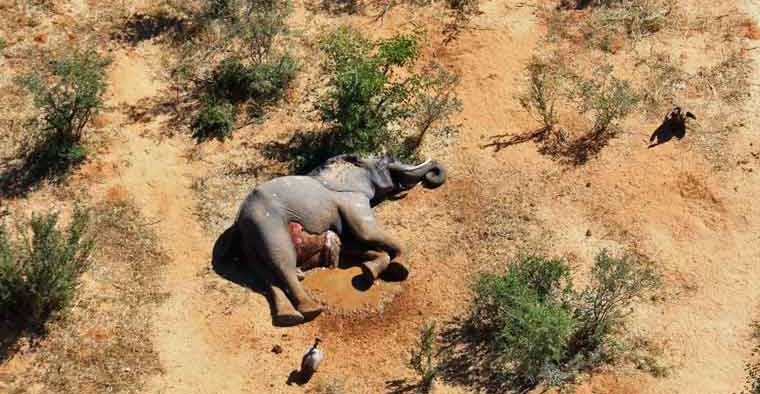Scientists Solve the Puzzle of 350 Elephant Deaths in 2020
Share

In 2020, the sudden and mysterious deaths of 350 African elephants in Botswana’s Okavango Panhandle baffled researchers and sparked global concern. Now, a recent study published in Science of The Total Environment has revealed the cause: toxic cyanobacteria blooms in nearby waterholes.

The Cause Behind the Elephant Deaths
The Okavango Panhandle, a remote region in northeastern Botswana, was already known for poaching activity, but poaching was ruled out since the elephants’ tusks were found intact. The investigation also considered diseases like anthrax and encephalomyocarditis virus, but these were dismissed due to the lack of typical symptoms. The Botswana government had initially pointed to cyanobacterial toxins as a possible cause, though evidence was inconclusive—until now.
How Cyanobacteria Led to the Mass Die-Off
Using satellite data and spatial analysis, researchers examined nearly 3,000 waterholes in the area. They identified 20 waterholes near fresh elephant carcasses that had significant cyanobacteria blooms in 2020, which produced the highest levels of phytoplankton biomass seen in nearly a decade. Cyanobacteria, which thrive in stagnant, nutrient-rich waters, produce toxins that can be lethal to animals.
Elephants were found to have traveled an average of 16.5 kilometers before dying within 88 hours of drinking from contaminated waterholes. This suggests that exposure to cyanotoxins was a likely factor in their deaths.
Exacerbating Factors: Climate Change and Human Activity
The study notes that climate extremes, such as drought, likely worsened the cyanobacteria blooms by creating ideal conditions for their growth. While cyanotoxins are considered the primary cause, researchers caution that other factors, such as the Pasteurella bacteria linked to similar elephant deaths in neighboring Zimbabwe, may have played a role.
The COVID-19 pandemic posed logistical challenges for on-ground sampling, hindering definitive conclusions, but the study highlights the growing threat of cyanobacteria blooms, which are becoming more frequent due to climate change and human activities, such as agricultural runoff. These blooms not only pose risks to wildlife but also to human health.
A Call for Action
This study underscores the importance of using satellite data and eco-hydrological models to monitor water quality and wildlife health in remote regions. The researchers advocate for this approach as a potential solution to prevent similar mass mortality events globally and improve conservation strategies for vulnerable species like elephants.
As ecosystems face increasing pressures from climate change and human impact, the study calls for urgent action to address the root causes of environmental degradation and safeguard wildlife habitats.








